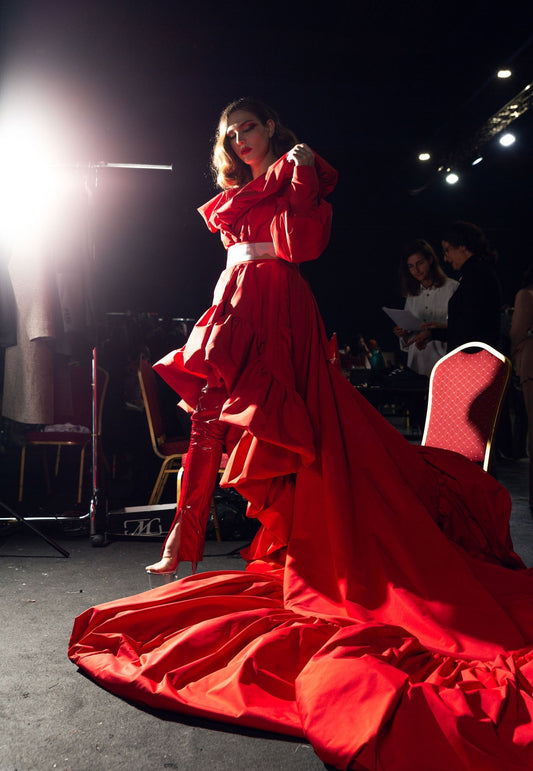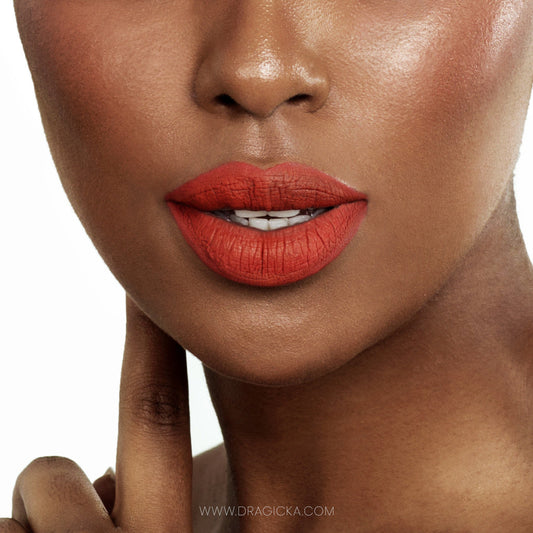
What is gender identity?
Share
Gender understanding - an easy way to have meaningful conversations about gender, sex, gender identity, and attractions.
TL;DR:
Gender topics can be confusing and complex because there are multiple factors to count in. There is an easy way to have this important conversation.
- Anatomical Sex – refers to anatomy & physiology (genitals, reproductive organs, hormones, chromosomes, etc.). It’s not gender.
- Gender Identity – it’s how you feel and think about yourself, based on your understanding of gender options.
- Sexual & Romantic Attraction – doesn’t make the gender, but it’s combined into how we understand genders or think about attraction(s) that we experience towards others.
- Gender Expression – it’s how you present yourself to the world through your body language, clothing, actions, and more. It’s also about how others interpret your expression.
Your identity, your sex, your attractions, and your expression are not the same, they don’t determine each other, and they don’t depend on each other. They all work together and complete this wonderful, vibrant, unique human – you.

"Hi, there! I identify myself as non-binary; my pronouns are them and her, my orientation is polyamorous pansexual, and I'm attracted to gender-fluid persons. Nice to meet you!"
And just like that – your mind explodes. ✨
Yes, it's super complicated, intricate, and complex. Still, it's also super important, enlightening, and meaningful to know and understand the gender topic or to be able to explain it to someone else. 🤗
Because it's a mix of biology, psychology, and behavioral science with a dash of emotions – this is not a common topic that'll come up often in your everyday social circle conversations.
It can be confusing (sometimes even scary), but traditional gender roles, stereotypical social norms, and old moral prejudices about gender, sex, sexuality, and gender expression don't apply anymore. 🥳
So what is, actually, gender identity? While it might seem like one needs a manual or instructions sheet just to talk to a person these days, or even understand themselves for that matter, we'll break it all down into delicious bite-sized pieces that will be easy to digest.
Stay around for an easy lesson on gender understanding! 💜
What is Anatomical/Biological Sex?
It’s what you’re dealt at your birth – but we know there are more colors than in your regular deck.
Most people refer to biological sex when contemplating genders, which can be limiting. Simply put - biological sex is a medical sticker. It can be male or female, based on solid measurables - the genitals and the chromosomes we are born with. It's often regarded as a legal gender and it goes on your birth certificate. 📃 The biological sex is established at the very moment of fertilization, and the first signs of sex differentiation in an embryo can be noticed after some six weeks.
What is Intersex?
Life is usually not that simple, and medicine recognizes cases of combined sex characteristics in an intersex person. Believe it or not, most people discover that there are not only males and females - only once they meet an intersex person. An intersex person is someone born with sex characteristics (including genitals, gonads, and chromosome patterns) that do not fit typical binary notions of male or female bodies.
It's hard to know exactly how many people are intersex. Still, estimates suggest that about 1-2 in 100 people born in the U.S. are intersex, which can manifest in many variations. Statistics from the Intersex Society of North America showing the frequency of intersex births can help us to grasp it's not a "one in a million" situation.
In fact, in every 100 births, one baby has a body that differs from standard male or female.

What is Gender Identity & Spectrum?
And the plot of our story thickens… just a tiny bit.
Gender seems a bit more personal. This is a broader term than anatomical sex. It implies a social and legal status and a set of expectations from society about how a person should behave and act. Each culture has standards about how people should behave based on their gender, usually either male or female.

Gender identity is how a person feels about themselves, regardless of the gender rules that can be restrictive on a few levels (domestic behaviors, occupations, personality traits, or physical appearance). This feeling begins very early in life, as early as age 2 or 3, and after gender identity has been formed, it's tough to change its trajectory. Difficulties arise when someone is assigned a gender based on their sex, that doesn't align with how they come to identify themselves. This mismatch can lead to frustration, anxiety, and even depression.
Gender identity disorder is a formal diagnosis given by mental health professionals to people who experience distress because of a significant contradiction between the gender they identify with and the gender they were born with. ☝
For many people, their sex matches their gender identity. These people are called cisgender. Then, some people feel like a masculine female or a feminine male. Don't you know that adventurous girl who enjoyed climbing high trees? Or that boy who makes mean brownies? That's how society would probably describe them. Some people feel the exact opposite of their anatomical sex, and they may choose to identify as transgender.
But some people feel neither male nor female. These people may choose labels such as "genderqueer,” "gender variant," "two-spirit," or "gender fluid."
So, what is Cisgender?
The word cis or cisgender exists to fill a gap that would exist in language, that has previously been filled with words like 'normal' or 'regular' - which then makes all other people' abnormal' or 'irregular' as a result. While cis people are more common, saying "normal" can have a connotation of diminishing trans people. Our language should not be only specific but value-neutral, not to paint cis or trans people as better or worse as a result.
By differentiating between trans and cis people, we can talk about the experiences we have that differ and the many more similar experiences we have.

The world needs both males and females, but instead of only two options, we can have an entire scale, so everyone may choose their identity according to their sensibility and not according to conventional perception. 🦄 We are using the term Gender Spectrum when we want to refer to the fact that there are multiple gender identities, way beyond just the two most common - male and female.
What is Sexual Attraction?
Or the more interesting question – how does it work with gender?
Sexual attraction, preference, or orientation, can be thought of as the lust or desire for physical, sexual contact and relationships. The basics we all know so far are that - a straight man is attracted to women, a gay man is attracted to men, and a bisexual man is attracted to both men and women. The same logic goes for women's orientation as well. But there are a few more options in the sexual orientation pool.
Some individuals feel attraction without gender as a factor, and they might identify as "pansexual." On the opposite side, if one doesn't feel any sexual attraction at all towards anyone, they might identify as asexual or "ace."

Depending on the gender(s) you're attracted to, you may identify as hetero-, homo-, or pansexual. If you're attracted to folks who are trans or androgynous, you might identify as skoliosexual. It is not necessary to define yourself with any label, but exploring yourself and being happy is essential. 🤗
What is Romantic Attraction?
The, oh, so tender, matters of heart… 💖
Romantic attraction is an affinity, love for others, and desire for emotional relationships. It can match sexual attraction, but it doesn't have to. One can sense a difference between a groin pulse and a heart pulse.

Some folks have both, some have neither, and many people experience more of one than the other. And that's okay. 😉
What is Gender Expression?
Here is one case where you don’t have to walk your talk
The way one feels inside about themselves through lenses of socially adopted gender roles is gender identity. Gender expression is how those feelings come out in the real world, through how we act, dress, and interact, intentionally or unintentionally. Gender roles are almost like rules; they are set and known.
On the other hand, gender expression is stretchy and fluctuant. It can be motivated by gender identity, sexuality, or entirely something else, like a daily task or situation. Not many women will demonstrate expected ladylike agreeableness if someone cuts their shopping queue. Yet the same females who stood up for their queue rights and almost made a cat-fight scene - will be all sweet, tender, caring, and nurturing to their kid or partner within the next hour.

Can you imagine yourself in these variations? Can you imagine others? We’re all capable of breaking the (traditional) gender expression norms multiple times throughout the day. The fact is, our gender expression may frequently change without us even noticing or thinking about it.
The Genderbread Person
Not so sure how to combine and stack it all together? Here is how.
When in doubt, use this delicious Genderbread Person to visualize and assign appropriate attributes. You can use it to do a self-check as well!

In the end, we couldn't help but wonder...
With all this said, do we need a user manual for each human interaction?
We know that gender identity, gender expression, anatomical sex, and sexual orientation are not in a causal relationship but independent of one another. People's gender expression doesn't cause their sexual orientation. And their gender expression isn't determined by their gender identity. And their gender identity isn't a consequence of their anatomical sex.
They certainly affect one another, but they do not define one another. We all have certain inner feelings, our unique preferences, biases, personalities, body shapes, physical predispositions, and emotions. And none of it is either pink or blue.
So, do we really need that manual? The answer is: No. We should just try to keep an open mind and an open heart. Because the world is full of different, vibrant, unique people, just like You, and - it's beautiful. 💜
Keep shining bright,
D.


